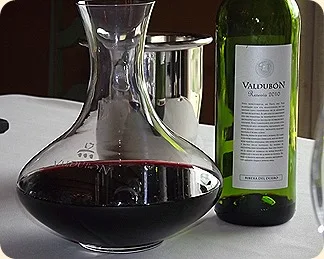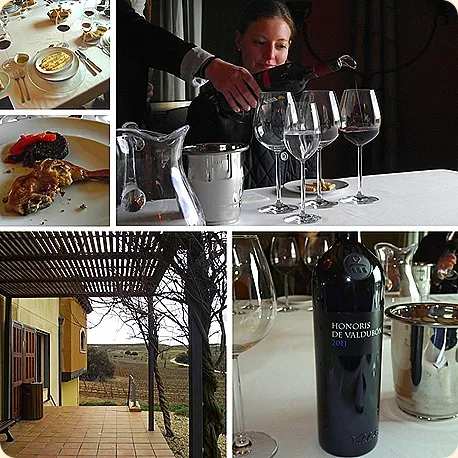A Land Of Contrasts
Stone walls edged the fields and lonely horses searched the hillsides for food. Outside the boulder-strewn landscape became a charcoal sketch of grey and white. Snow-clad hills gave way to a half-foot of snow. We soon descended into a valley and the prospect for wineries improved. Looking through my window the ground became the burnt orange of iron rich soil.
It was cold on this March day, as it often is in Ribera del Duero. Temperatures can drop to as low as –20 degrees F and climb to more than 100 degrees in the summer. Despite these demanding conditions, wines from Ribera del Duero (named for the Duero River) are are some of the best Spain has to offer.
Never Miss A Toledo Wines and Vines Post – Click To Subscribe
Valdubón Artistry With Tempranillo
In Ribero, the primary grape is Tinta del País. While this is Tempranillo, it is certainly a different clone than Tempranillo in Rioja. The grapes are smaller, powerful and robust. They have to be to withstand the harsh conditions that include hailstorms. Valdubón focuses on Tempranillo, but also grows small amounts of Merlot and Cabernet Sauvignon.
We began our tasting with the 2014 Tempranillo. The wine spends a short four months in oak and has a fresh, foresty flavor. It cries out to be paired with food and, our host Gloria said, is considered “the wine of the women.” To avoid a left hook to the head from my wife, I’ll rephrase that to say this is the choice of those who like a less robust style.
Three Categories Of Ribero del Duero DO Wine
Reserva must be aged three years with at least one in oak. Grand Reserva is only made in exceptional years. The wine must be aged five years and two must be in oak.
The 2010 Reserva was spot on with Valdubón’s philosophy of great quality at a great price. The wine is deep red with a crimson edge, as you swirl, the aroma of dark fruit comes forward. The flavor is rich and complex with a note of rosemary and nuts.
It is aged half in American oak and half in French oak. The Reserva is a perfect match with lamb chops. We decanted this wine and we enjoyed sipping while soaking in the hunting lodge décor of Valdubón with a view of the rolling hills of Spain.
Spanish Wine and Food Pairing
To spotlight the wines further, we sampled them over a gourmet lunch. Our opening course of white asparagus with salmon and a light cheese sauce was a primo match with the 2014 Tempranillo.
We were able to sample two wines that regrettably are not available in the US: the Diez and the 2011 Honoris de Valdubón. The Diez was created for Valdubón's 10th anniversary. The wine has an “edition” but no vintage as it combines the best barrels from different harvests. A blue-ribbon group of winemakers helps select the final blend for the wine. Only 10,000 bottles were made.
Our dining continued with blood sausages served with red peppers. Following closely on its heels was the Honoris. Honoris means recognition, honors or awards. No doubt this wine will receive many.
The wine comes in a stylish bottle of Italian design with embossed lettering and a minimalistic label. We were later shown a special label design that is used for Honoris sales in in China.
No matter where it is sold or in what bottle, this blend of 85% Tempranillo, 9% Cabernet Sauvignon and 6% Merlot is a superior wine. The Cab and Merlot fine tune the Tempranillo into a pleasing richness. It has an aroma of fresh cut wood and savory flavors of rosemary and forest floor. This is a great wine for beef tenderloin or the lamb chops we were served.
If Ribero del Duero isn’t on your radar yet, this is your invitation to try these intriguing reds. The wines of Valdubón are a great introduction – especially the Reserva. They represent a tasty value for those who appreciate quality red wines.





2 comments:
Nice job of capturing the details of the region and the wines! Now I am thirsty for some Diez.
Tina, thanks for being part of the adventure! The wine was impressive indeed.
Post a Comment